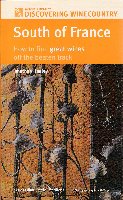
NICE'S best-kept secret, apart from excellent ravioli (this is where it was invented), is the tiny and exclusive appellation of Bellet. It’s tucked away in the hills amid swanky villas and greenhouses of carnations less than thirty minutes from the celebrated, palm-lined Promenade des Anglais.
There are just a handful of producers, some fantasy châteaux, and you can visit them all in a day. They’re dotted between the villages of St-Isidore and St-Roman-de-Bellet, within the city’s limits. Bellet owes its fame to a crisp, dry white wine based on the increasingly fashionable Rolle grape, once found only here and in Corsica.
The Niçoise have jealously kept Bellet wines to themselves for at least three centuries, and they’re still hard to find outside the city’s limits. Even today, they rarely get further than the cellars of Nice’s top restaurants like the Belle Époque Le Chantecler at the Hotel Négresco, where they’re the favourite accompaniment to local specialities like sea bass and bourride, a delicate fish soup.
The Niçoise have jealously kept Bellet wines to themselves for at least three centuries, and they’re still hard to find outside the city’s limits. Even today, they rarely get further than the cellars of Nice’s top restaurants like the Belle Époque Le Chantecler at the Hotel Négresco, where they’re the favourite accompaniment to local specialities like sea bass and bourride, a delicate fish soup.
The vineyards were more extensive in 1860 when Nice and the rest of the Alpes-Maritimes became part of France. In the early twentieth century, after the phylloxera blight, many vineyards were turned over to market gardening and flowers. Today they’re standing their ground against the encroachment of yet more jet-set villas and greenhouses. In fact, Bellet is the only appellation in France located within the boundaries of a city and it’s unlikely to expand beyond its current 60 hectares. Some producers make fewer than two thousand bottles a year.
Bellet was created in 1941, making it one of the oldest appellations in France. It came of age in the 1960s after some teething troubles (it narrowly avoided demotion two years after gaining AOC standing). Château de Bellet, owned by the president of the syndicat, is probably the best-known producer and guardian of the appellation’s reputation.
The wine
The vineyards are neatly planted between fig and olive trees on small parcels and narrow terraces called restanques at 200 to 400m in altitude. The land is steep and sun soaked with relatively abundant rain for the area. The grey mixture of sandstone, limestone and puddingstones is prone to soil erosion so some vignerons grow wild grasses between the vines to reduce the risk. The vineyards are immediately east of the Var valley where alternating currents of sea and mountain air prevent overheating and keep the grapes healthy.
Bellet comes in all three colours and some grape varieties are unique to the appellation. The indigenous Braque, for example, is a fragile grape that gives red and rosé wines of distinction, with characteristic rosewater aromas. It’s often blended with the dark-berried Folle Noire, another local variety (famed for its capricious nature). Folle Noire gives candied fruit and peppery notes. Bellet reds are noble wines that can be aged for decades, if you can wait that long. If you can’t, consult your bank manager and buy a 1990.
The rosés are made to accompany food and to be drunk young. They’re rosés de bouche rather than aperitif-style rosés de nez. The famous Bellet whites are delicious young but age well. You’ll find a drop of Chardonnay blended with the indigenous Rolle giving floral and citrus aromas to these sought-after wines, reminiscent of Chablis. The best are fermented and matured in oak.
How to visit Bellet
If you’re staying in Nice, visiting Bellet’s vineyards couldn’t be easier. Bus 62 from the Gare Routière goes to St-Roman-de-Bellet and takes in a good part of the route des vins. Alternatively, it’s twelve minutes by train from the Gare du Sud to St-Isidore and services are frequent. You could combine the train and bicycle or take the car and walk. The wine route is just 15km.
The tourist office can help you choose amongst the many accommodation options in Nice. The inexpensive, two-star Hôtel Floride in quiet Cimiez north of the centre near the Chagal museum has comfortable rooms and a garden.
Another option is to stay near the wine domains. Michele Golle offers bed and breakfast in a villa set in parkland with sea views and a swimming pool on the route des vins. Or try the elegant and gastronomic Auberge de Redier in Colomars just north of St-Roman-de-Bellet.
In St-Isidore, head for the main square and follow the Chemin de Crémat to St-Roman-de-Bellet. This route takes in nearly all of Bellet’s producers. Take a break in St-Roman-de-Bellet before heading back on the Chemin de Saquier to St-Isidore and treat yourself (but not your wallet) to a meal at the village’s only restaurant, the Auberge de Bellet. Back in Nice, head for the city’s best veggie restaurant La Zucca Magica, or local institution Restaurant Lou Mourelec for affordable Niçoise cuisine.
First published in Discovering Wine Country: South of France (2005).
















